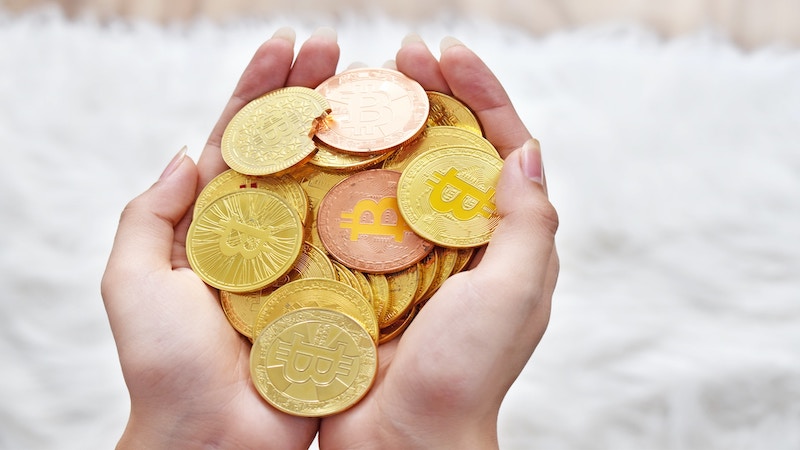An altcoin is any type of crypto that is not bitcoin. The word altcoin is made from the portmanteau of the words alternative and coin
Once upon a time not so long ago there was this one lone cryptocurrency called bitcoin.
It was a strange new creation by a mysterious person or group of people who went by the name Satoshi Nakamoto.
Even with the huge amount of interest in crypto and the level of information we have available to us, nobody to this date knows who Satoshi Nakamoto is, that’s pretty astounding!
For a while, at least, bitcoin was this strange new digital currency that few people really understood or even cared about.
Fast forward to today and crypto is big business, there are literally thousands of crypto coins and tokens out there and it’s growing by the day.
What is an altcoin?
The clue is in fact in the name, altcoin stands for alternative coin.
Going back to the early days of crypto when there was only bitcoin, the lone cryptocurrency, people began to recognise the potential of blockchain technology beyond what bitcoin was doing or offering.
So new coins began to appear and these new coins, basically anything that wasn’t Bitcoin began to be referred to as an altcoin or alternative coin to bitcoin.
A simple analogy to understand what altcoins are and how they came about
We can liken the current crypto craze to that of the birth of the internet in the 1990s.
Let’s imagine the internet starts with a single website, it’s pretty basic compared to today’s websites but functional.
That one initial website could be thought of as Bitcoin.
The whole concept is new, there is a basic browser and people can access and use this one site from anywhere.
So, some people began to see the potential of the internet and its underlying technology and began to create websites of their own, let’s call them “altsites”.
Now there are an estimated 1.86 billion websites out there or 1.86 billion “altsites” out there.
In much the same way, bitcoin was the pioneer that created the first crypto and its underlying blockchain technology, since those days over 9000 altcoins are out there and this number is going to keep rising as it did with websites.
The history of altcoins
In 2009 bitcoin arrived on the scene, what happened next? Well around 2011 the first altcoins appeared running on the bitcoin blockchain.
The very first altcoin was Namecoin. Namecoin was based on Bitcoin’s code and arrived in April 2011.
Namecoin demonstrated that there was space for more coins beyond bitcoin and from there the race to build more altcoins began.
An altcoin is not second best
It may seem obvious but we must also understand that the first is not necessarily the best, just like the first automobile cannot be compared to the automobiles of today.
The first car simply paved the way for others and validated a need, utility and demand.
In much the same way, using the internet example again, today’s websites are far superior to the very first websites.
The first websites indeed played a huge part in the development of the internet but they are not superior.
This is a very important thing to keep in mind as sometimes we can think of an alternative as maybe being second best.
This is definitely not the case with altcoins. They are simply alternatives or derivatives of Bitcoin in some way.
If we look at Ethereum, it is an altcoin.
Ethereum however serves a very different purpose to that of bitcoin.
Whilst bitcoin is purely a digital currency, a way of holding and transferring value, Ethereum is a cryptocurrency with its own powerful ecosystem capable of a lot more applications such as decentralised finance.
Altcoins can be highly experimental and volatile!
If we go back once again to the Internet analogy and think about e-commerce, there are limitless possibilities to sell things online.
Some make a lot of sense and will take off and succeed like Amazon but there are also millions of others that just won’t make it.
Putting money into altcoins can be very risky, especially very new ones as there’s no guarantee of success, just like investing in a brand new startup that sounds promising but could eventually implode or of course, become mega-successful. The same with altcoins!
The technology behind all altcoins
Just like the core technology behind all websites is basically the same, we can say the same with crypto.
All cryptos run on something known as a blockchain. Call that the “internet of crypto”.
Blockchains are literally chains made up of blocks.
In the case of Bitcoin these blocks are mined using something called proof of work (PoW), validated and added to the chain, each time a new block is added to the chain, the miner receives coins in payment.
All altcoins use some form of blockchain.
Ethereum has its own blockchain that currently also works using proof of work although that is likely to change soon but that’s a separate topic.
For now, though, it’s important to understand that the core technology or principles that drive Bitcoin form the basis or foundation of all altcoins in some way.
Conclusion
In summary, the vibrant and diverse world of crypto that we see today started out with a single coin, bitcoin.
Everything that has followed ever since is referred to as an altcoin. It’s not conceivable that at some point, perhaps even now, the term altcoin will not be very relevant and go out of use.
For now, all you need to know is that an altcoin is any coin that is not bitcoin, easy enough!









